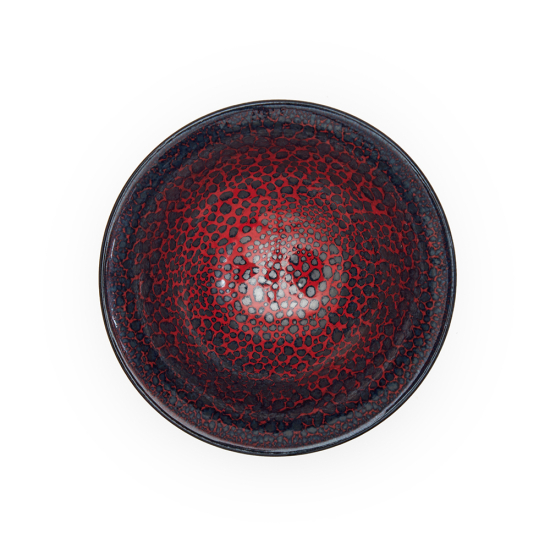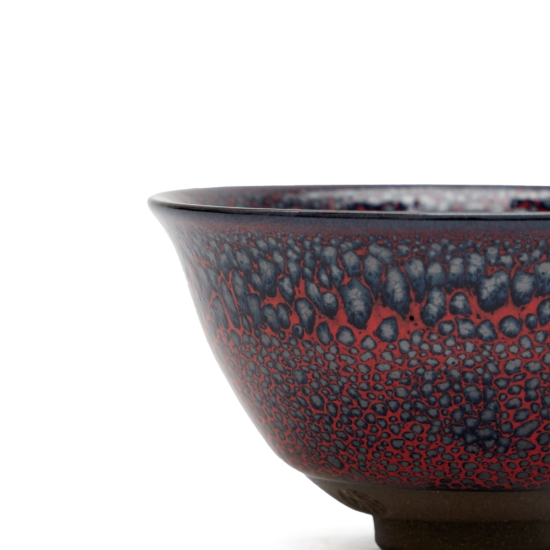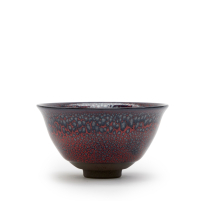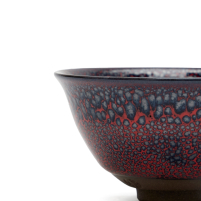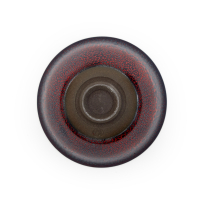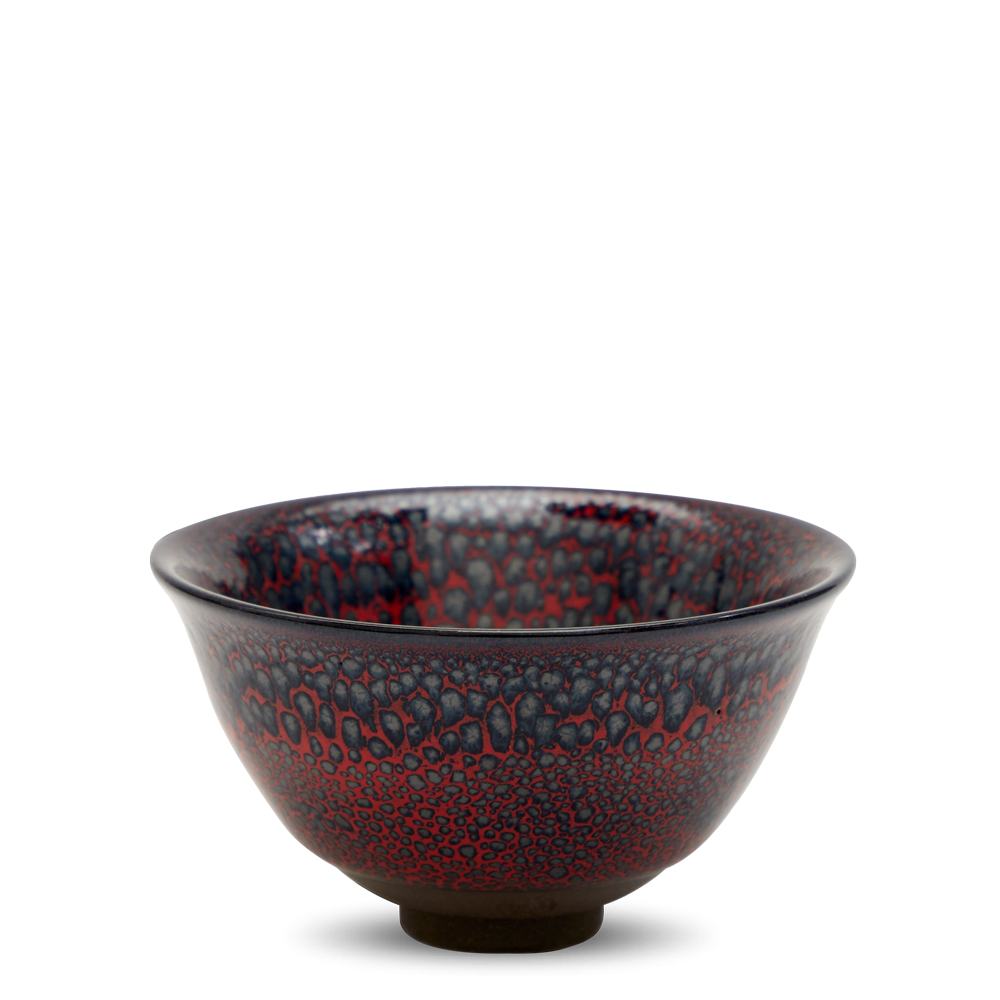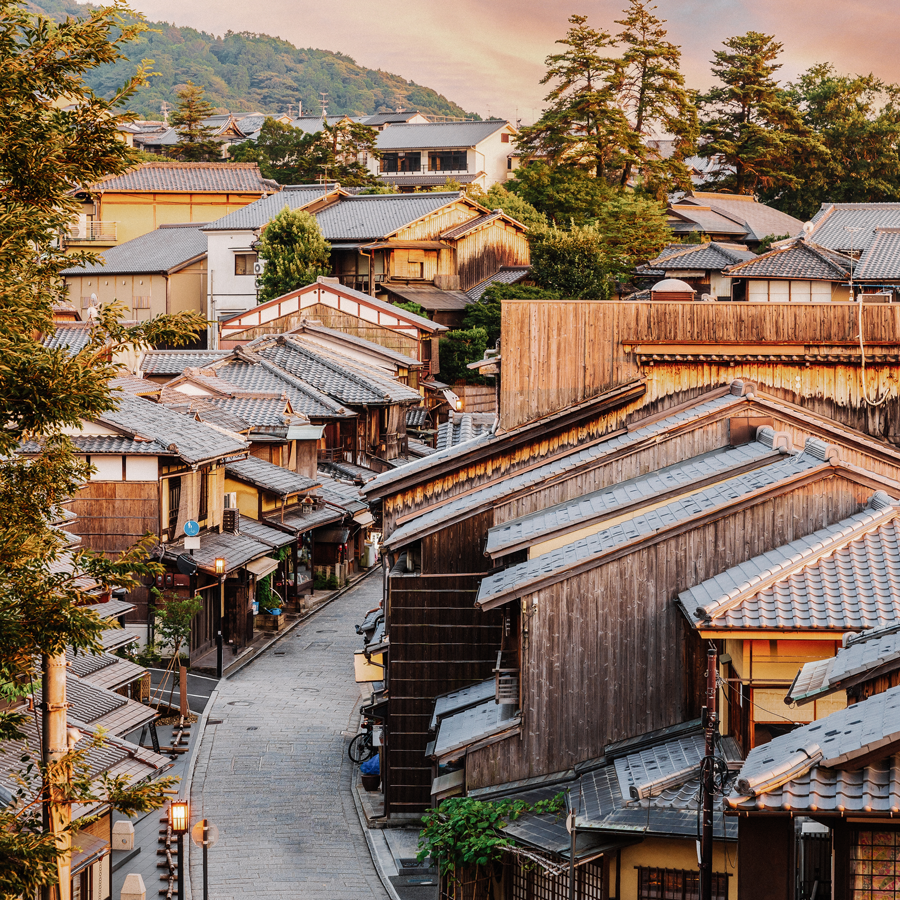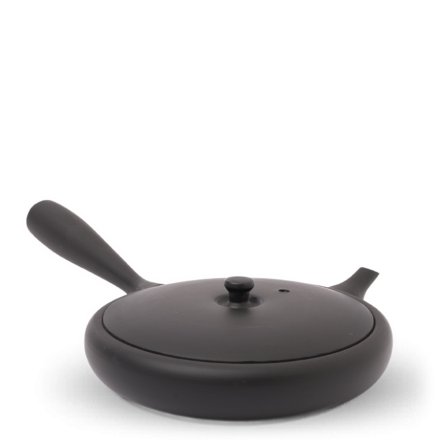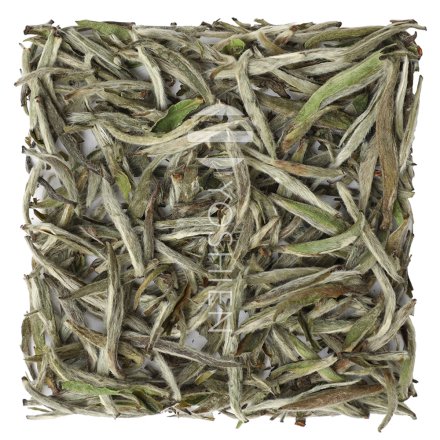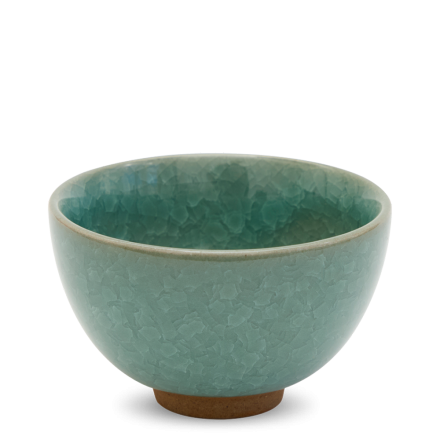Yuteki Tenmoku
Literally "heaven's eye", Tenmoku (天目) is a type of Japanese pottery that imitates Jian ware from China. It is named after the Tianmu Mountain (天目山) in Zhejiang, where Japanese Zen priests of the Kamakura period (1185–1333) came to study and were served tea in these beautifully glazed bowls.
Yuteki (油滴), literally “oil drop”, is one of the most admired styles of Tenmoku glaze. A notoriously challenging technique to master, the oil spots are achieved through overloading the glaze with iron, which forms tiny glass droplets during firing that burst when they come up to the surface.




